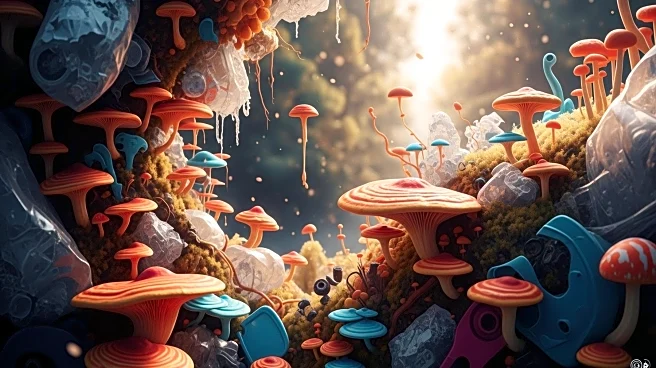What's Happening?
Researchers have discovered that sunken World War II munitions in the Bay of Lübeck, Germany, are serving as habitats for marine life despite their toxic nature. The study, led by Andrey Vedenin of the Senckenberg Society for Nature Research, found that epifauna, including fish, corals, and mussels, are colonizing these warheads in numbers comparable to natural hard surfaces. The munitions contain high concentrations of explosive compounds like TNT, which approach toxicity thresholds for aquatic organisms. Despite the potential dangers, the hard surfaces provided by the munitions appear to be more attractive to marine life than the softer sediments of the seafloor.
Why It's Important?
The findings highlight a complex interaction between human-made structures and marine ecosystems. While the munitions offer a habitat for marine life, they also pose a risk due to the toxic chemicals they release. This situation underscores the need for careful management of underwater debris to protect marine environments. The study suggests that replacing these toxic structures with non-toxic artificial surfaces could provide safe habitats for marine life while eliminating the negative impact of chemical exposure. This research could inform future policies on managing underwater debris and protecting marine biodiversity.
What's Next?
The researchers recommend removing the toxic warheads and replacing them with non-toxic artificial hard surfaces to ensure marine life has a safe habitat. This approach could mitigate the environmental impact of the toxic chemicals leaching into the ecosystem. The study may prompt further investigations into the ecological role of human-made structures in marine environments and influence policy decisions regarding underwater debris management.
Beyond the Headlines
The study raises ethical questions about the balance between providing habitats for marine life and exposing them to potentially harmful conditions. It also highlights the long-term environmental impact of wartime activities and the need for sustainable solutions to manage underwater debris. The research could lead to broader discussions on the role of human intervention in shaping marine ecosystems.












